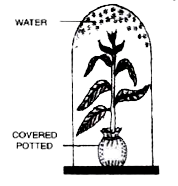"In hilly areas, sand is thrown on tracks covered with snow ". Why ?
To understand why sand is thrown on tracks covered with snow in hilly areas, we can break down the reasoning step by step:
1. Understanding Friction:
- Friction is the force that opposes the relative motion of two surfaces in contact. It is crucial for movement, especially for vehicles on tracks.
2. Snow and Friction:
- Snow-covered surfaces have very low friction. This means that vehicles, such as trains or cars, have difficulty moving because there isn’t enough grip between the wheels and the snowy surface.
3. Role of Sand:
- Sand is a granular material that has a rough texture. When thrown onto a snowy track, it creates additional contact points between the wheels of the vehicle and the surface.
4. Increasing Friction:
- By adding sand to the snow, the overall friction between the vehicle's wheels and the track increases. This is because the sand particles can interlock with the snow and the tires, providing more grip.
5. Facilitating Movement:
- With increased friction due to the presence of sand, vehicles can move more easily on the snowy tracks. This is particularly important in hilly areas where the slopes can make it even harder for vehicles to gain traction.
6. Conclusion:
- Therefore, the main reason sand is thrown on tracks covered with snow in hilly areas is to increase friction, allowing vehicles to move safely and effectively.
- Friction is the force that opposes the relative motion of two surfaces in contact. It is crucial for movement, especially for vehicles on tracks.
- Snow-covered surfaces have very low friction. This means that vehicles, such as trains or cars, have difficulty moving because there isn’t enough grip between the wheels and the snowy surface.
- Sand is a granular material that has a rough texture. When thrown onto a snowy track, it creates additional contact points between the wheels of the vehicle and the surface.
- By adding sand to the snow, the overall friction between the vehicle's wheels and the track increases. This is because the sand particles can interlock with the snow and the tires, providing more grip.
- With increased friction due to the presence of sand, vehicles can move more easily on the snowy tracks. This is particularly important in hilly areas where the slopes can make it even harder for vehicles to gain traction.
- Therefore, the main reason sand is thrown on tracks covered with snow in hilly areas is to increase friction, allowing vehicles to move safely and effectively.
Topper's Solved these Questions
- BOOK - ICSECHAPTER - FRICTIONEXERCISE - Very short answer question9videos
FRICTION
- BOOK - ICSECHAPTER - FRICTIONEXERCISE - Selected problems30videos
FRICTION
- BOOK - ICSECHAPTER - FRICTIONEXERCISE - Long answer questions2videos
FRICTION
- BOOK - ICSECHAPTER - DYNAMICSEXERCISE - SHORT ANSWER QUESTIONS WITH ANSWERS12videos
DYNAMICS
- BOOK - ICSECHAPTER - GRAVITATIONEXERCISE - FROM THE HUBBLE TELESCOP2videos
GRAVITATION
Similar Questions
Knowledge Check
- Question 1 - Select One
How does sprinking of salt help in clearing the snow covered roads in hilly areas? Explain the phenomenon involved in the process.
Alowering in vapour pressure of snowBdepression in freezing point of snowCincrease in freezing point of snowDmelting of ice due to increase in temperature by putting salt
The surfaces of the train wheels and railway tracks are made smooth ". Why ?
View SolutionA light metal disc on the top of an electromagnet is thrown up as the current is switched on. Why? Give reason.
View SolutionWalking becomes difficult, When the ground is covered with snow or sand this is because
View SolutionWhy are extremities of two bones covered with a pad of cartilage?
View SolutionGiven below is an experimental set-up to study a particular process:

Why is the pot covered with a plastic sheet ?View SolutionHow does sprinking of salt help in clearing the snow covered roads in hilly areas? Explain the phenomenon involved in the process.
View SolutionIf a ball is thrown vertically upwards with speed u, the distance covered during the last t second of its ascent is
View Solution

